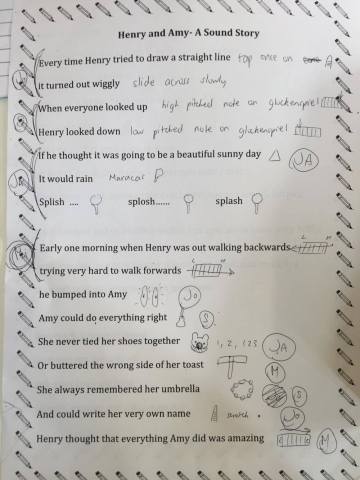‘Integration’ in relation to education can be defined as “relevant context-based learning which emphasises the inter-connectedness of knowledge” (Clark, et al., 1997, p. 16, as cited in Ewing & Gibson, 2011, p. 17). Integrating dance into the wider curriculum supports the Early Years principle that the learner is holistic and sensory. A holistic approach to teaching and learning recognises the connectedness of mind, body and spirit (Australian Government Department of Education, Employment and Workplace, 2009). This approach often sparks students’ creativity, allowing them to become innovative and reimagine content. The integration also supports the principle of seeking to make meaning and connections; where it is stated in outcome five that “children express ideas and make meaning using a range of media” (Australian Government Department of Education, Employment and Workplace, 2009, p. 42).
Dance is strongly linked to many aspects of numeracy. Learning dance can correlate with students’ understanding and applying concepts related to space and number, such as positive and negative shape, pathways, position, relationships, viewpoint, dimension, patterns, repetition, variation, counting, rhythm and form (NSW DEC, 2011). Furthermore, a key area in mathematics is problem solving which is required when composing any dance, particularly when working with other students. In the appendix below, the group composition requires higher order thinking and problem solving skills to create a dance that incorporates different dance elements while fulfilling the mathematical task requirements.
References
Australian Government Department of Education, Employment and Workplace. (2009). Belonging, Being and Becoming. Retrieved May 27, 2016 from https://www.coag.gov.au/sites/default/files/early_years_learning_framework.pdf
Ewing, R. & Gibson, R. (2011). Transforming the Curriculum through the Arts. South Yarra: Palsgrave Macmillan.
NSW Department of Education and Communities. (2011). Numeracy in the arts. Retrieved May 27, 2016 from http://www.curriculumsupport.education.nsw.gov.au/litnum/numinarts.html
Appendix: Unit of Work for Stage 2- Connecting Dance and Numeracy
Students learn about compass directions and learn to describe pathways on a map using these compass directions.
Warm up
Students make locomotor movements according to teacher’s instructions of moving left, right, forwards, backwards or diagonally. This progresses to using a compass as a visual stimulus to instruct students which direction to move in.
Improvisation
Partner work- Develop 8 counts to represent how they would show the given pair of opposing directions. Consider the various dance elements.
- West/east
- North/South
- North East/South West
- North West/South East
Development
Improvisation leads to a group composition. Four sets of partners (8 people) join and are given a grid treasure map. Students must draw a path to one of the treasures on the map. Students negotiate which dance movements (from the improvisation activity) they will use to represent their pathway in order to reach the treasure. They will record it on their maps and perform it to the class.
Reflection/Feedback
Other groups are given a blank treasure map and must draw the pathway that they are viewing. The performing group reveal their pathway to the treasure and the remainder of the class examine if their pathway is the same or different.










